“I was watching an episode of Friends and someone was wearing a Motörhead T-shirt. Literally an hour later, I got a call to work on their record!”: Romesh Dodangoda on how he became one of modern rock's most in-demand producers
Grammy-nominated Romesh Dodangoda has worked with Bring Me The Horizon, Funeral For a Friend, Nova Twins and Motörhead. We talk gear, recording techniques and career highlights, and hear his advice for aspiring producers
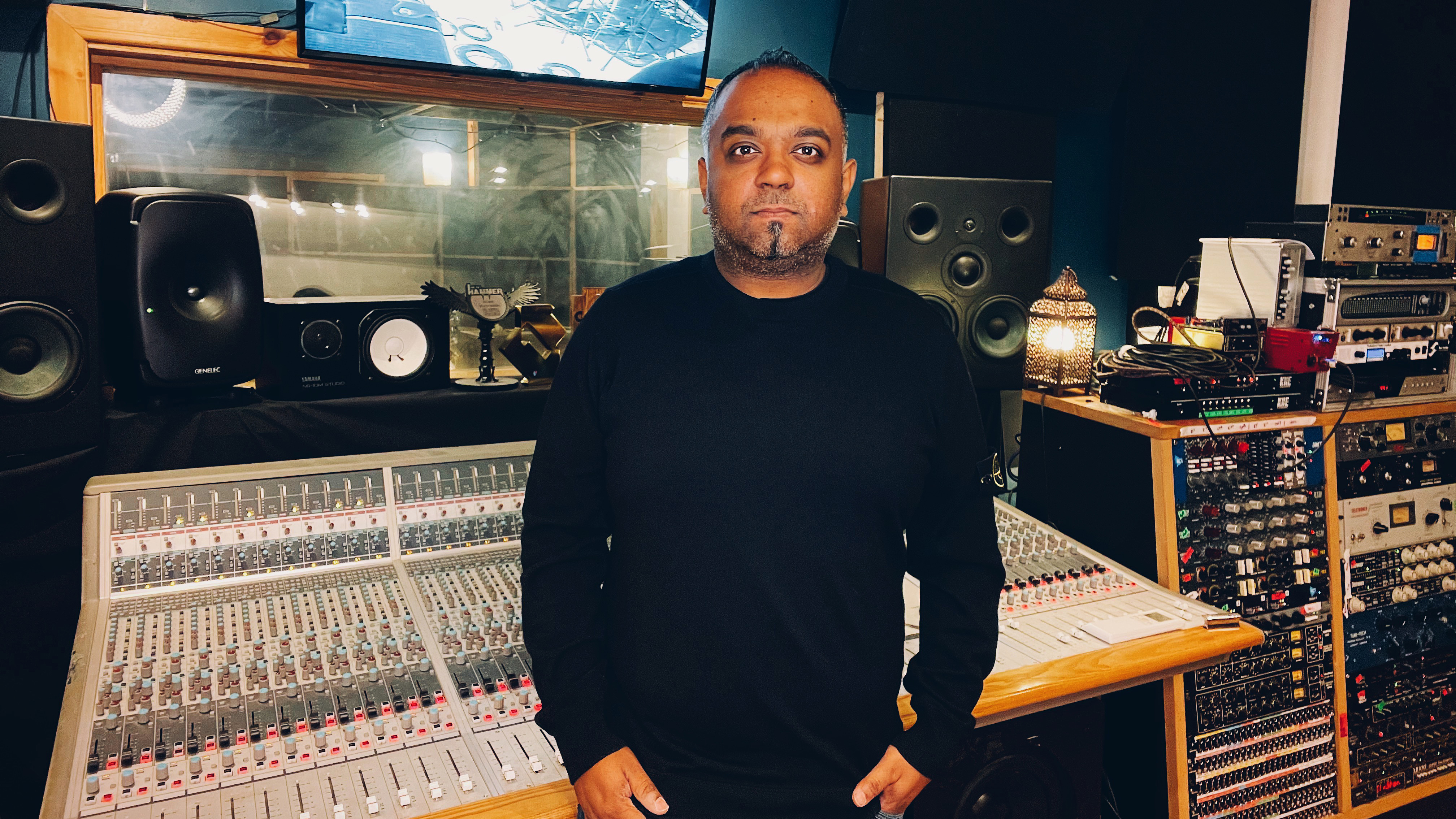
Romesh Dodangoda has established himself as one of the most influential producers in modern rock music, having shaped the sound of artists from Motörhead to Funeral For A Friend over the past two decades.
From humble beginnings recording friends in his parents’ garage to Grammy nominations with Bring Me The Horizon, here the Welsh rock maestro talks us through his career so far, gives us a glimpse inside his studio and offers some sage advice to those starting out in music production.
How did you get into the world of production in the first place?
“It started from playing guitar as a kid, to be honest. I think, as any guitarist can probably understand, once you start playing guitar, you start going down this hole of asking, ‘How did that person get that guitar sound? And how do I make mine sound like that?’ That was the starting point for me. It was about understanding how various things would affect a guitar tone.
“I started off really small. I was using Cubase at the time. I had a really small amount of gear and I would just see how I could bend my guitar sounds, stuff like that. I was learning how to demo on some level, I guess! I really got the bug for it. I was in a band, but I remember I always hated the whole ‘being in a band’ thing.
“I wasn't interested in playing shows, but I absolutely loved going into the studio. Because I was just fascinated with the process; asking, ‘How does this song end up coming out of the speakers?’ Back then, I didn't really understand what was going on. But I really paid a lot of attention to what other people were doing when I was in their presence.”
It’s almost like being in a band was simply a conduit to you learning about studio recording.
Want all the hottest music and gear news, reviews, deals, features and more, direct to your inbox? Sign up here.
“Totally. I had no interest in doing anything band-related, but I really fell in love with recording, with learning about how other people were doing what I was doing in my bedroom, but on a bigger level.
“I had friends who were acoustic singer-songwriters, and one of the things I started doing, which I think really helped me, was offering to record them as a way for me to get better at understanding how microphones worked. You know, ‘Why does this acoustic guitar sound boomy?’ And then you kind of start figuring out, like, ‘Oh, it's because the mic needs to move!’ So I utilized the fact that I had so many friends who were musicians. That really helped me learn.”
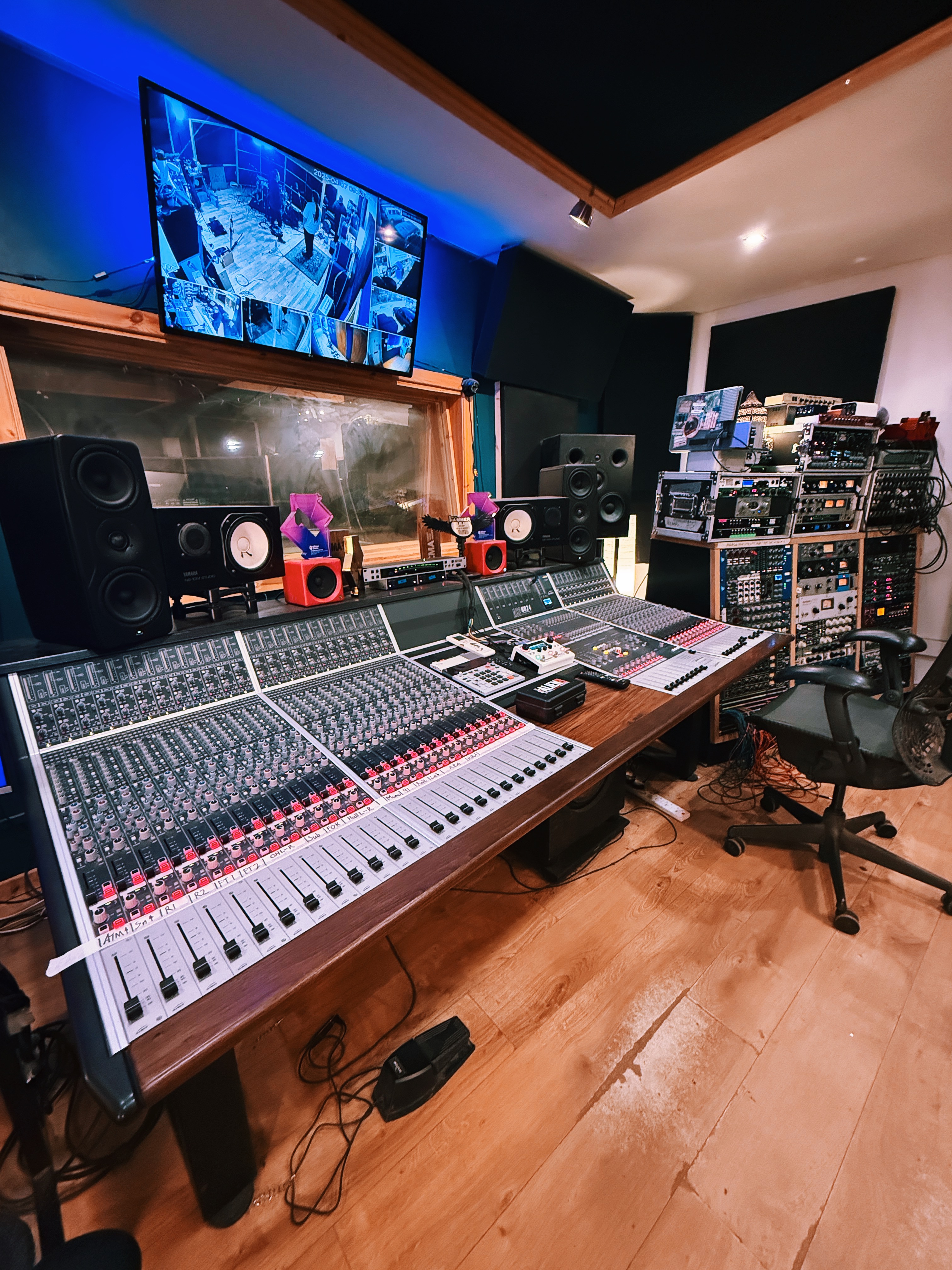
Is that an approach you’d recommend to others coming up in music production?
“Massively. I think it's such a huge thing: if you've got friends nearby who need something recorded, and you need to learn, that's just such a good combination. My parents had a garage room that was doing nothing, and they very kindly let me turn that into a studio.
“I had some friends who were in a band; they came over, and then I just tried to understand how drum recording worked. How to mic them up. That was the point where I just got really fascinated with it, because there are so many different ways you can go when it comes to drum recording, and there are more mistakes to be made there as well. You learn a lot from making mistakes.
One thing that I always say to people who ask me for advice is that your work, your mix, your production: that’s your business card
“I was trying to develop a kind of sound, I guess, and there was a lot of word of mouth going around, other bands wanting that sound. I ended up working with a lot of bands in the Welsh music scene, some of them who went on to do bigger things. One of the bands from those early days was called Kids In Glass Houses, who later on got picked up by RoadRunner Records. Then I ended up doing the first record, which was a big moment for me, because that was a step into working with a big label, and the record did really well.
“One thing that I always say to people who ask me for advice is that your work, your mix, your production: that’s your business card. And when you put that out into the world, you don't know who's going to hear it. So I was always striving to make everything I did the best it could be. And as it turned out, that's how some of the bigger artists ended up getting in touch.”
You ended up working with some of the biggest people imaginable - Motörhead obviously comes to mind.
“I did. I worked on The Wörld Is Yours with them, they were recording it out in the States. But then Phil Campbell, the guitarist, had to come back to the UK. I got a call and ended up doing all the guitars on that record. I've also worked with him since - I produced his new band’s record.
“The Motorhead opportunity was funny in a way: I remember, it was a Sunday, and I was watching an episode of Friends, and someone in Friends was wearing a Motörhead T-shirt. And then, literally an hour later, I got a call to work on a record for Motörhead! [laughs] But it was an honour to work on that because that band has such a legacy.
“Phil Campbell is just an incredible character. Every day I would love turning up the studio, and every day I’d get a new Motörhead story. That was so fun for me, to just sit and listen to him. I think he's probably the person with the most amount of guitars I've ever known.”
You must have a couple of Motörhead stories of your own now.
“Yeah. Although I don't know if I can tell you any of them!”
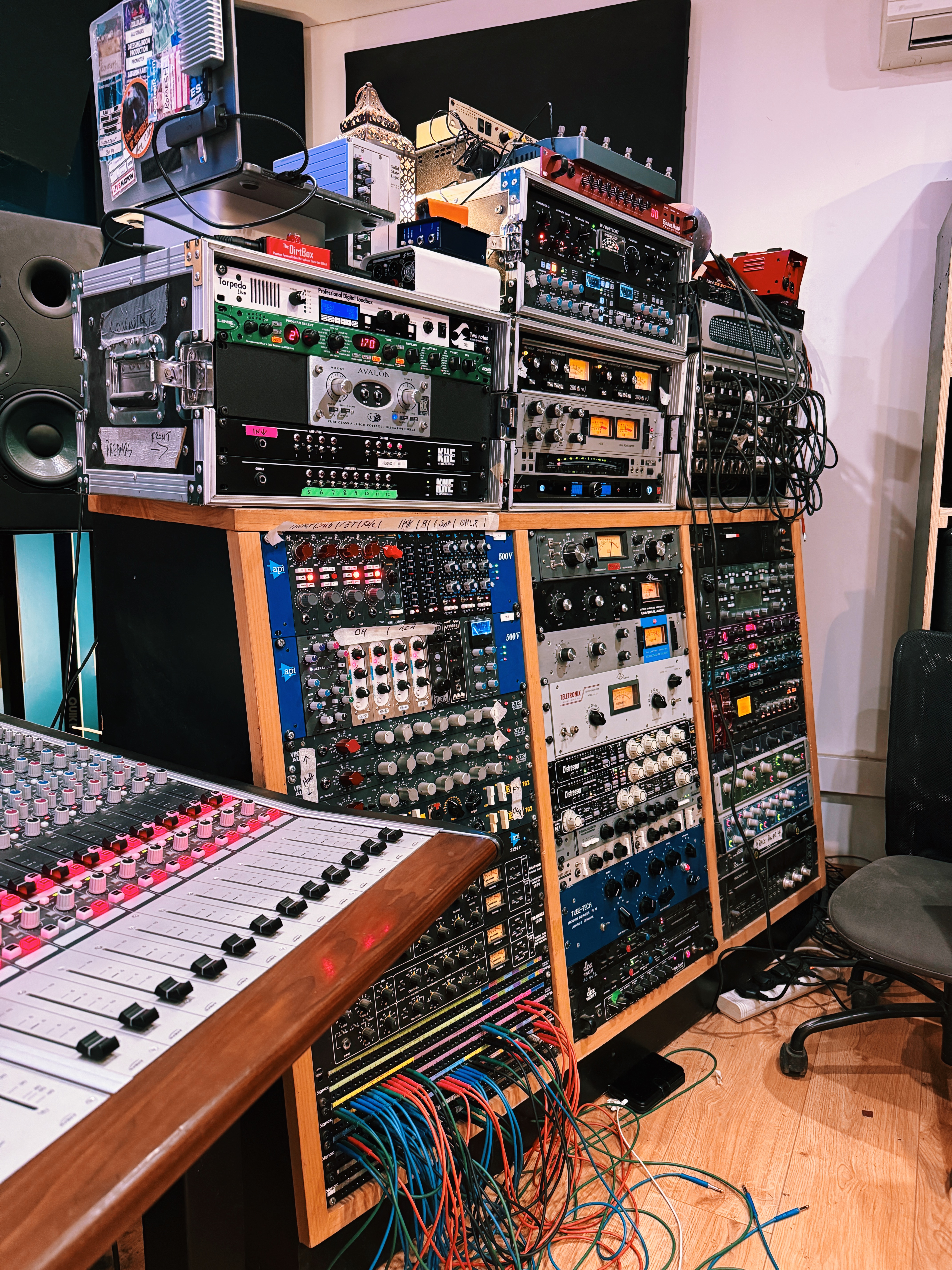
The guitars on that record of course sound amazing. Can you remember how you went about capturing Motörhead’s guitars, from a technical perspective?
“We used a Shure SM57, a Sennheiser MD421, and a Royer R-121. We also used a Bogner Uberschall guitar amp, which is one of my favourite heavy amps. I actually got mine off Kris from Funeral For A Friend, so it’s a special one to me…! It's a funny old amp; it's basically got two sounds, on or off. [laughs] You turn the gain from two to nine, and it's just the same sound! But it's great. We used that and a Marshall JCM800 which I have that sounds amazing to add clarity to the heavy sound. And definitely my Mesa Boogie 4x12 cab.
“I'm a huge fan of Mesa cabs for recording. There's just like a tightness that you get with them. I use that quite a lot for heavy guitars. I mean, it was all pretty simple. I love using Ibanez Tube Screamers. I think one of the things that not everyone understands about the Tube Screamer is that it's not just a drive pedal, it's a high-pass. So when you put that high-pass in front of the guitar amp, all of a sudden the low end gets a lot tighter because the amp’s not seeing all of that super low-down stuff. We definitely used that on the Motörhead session, for sure.”
When it comes to guitars, bigger isn't always better when it comes to recording.
“No, absolutely. Also, a lot of the time, because people can't always get things to sound right in the computer when demoing and they end up putting so many layers in, that makes the song actually sound smaller to me. Good arrangement is what makes songs have that size. When you've got songs which have plenty of space in the notes and the drum parts and all of that, that’s when things can sound really big.”
You’ve worked with so many artists now: what else stands out as a project you’re particularly proud of?
“That would be the work that I've done with Bring Me The Horizon. I mixed their Live At The Royal Albert Hall release, which is basically the full band with a full orchestra and a choir. That was probably one of the hardest things I've ever mixed. You're having to get the band to sound really big, but then you've also got the orchestra, which is naturally a big sound, and then you've got the choir on top!
If you're going round in circles, sometimes you just need a fresh take. And if that means just pulling the faders down and rebalancing again, then sometimes that is the best thing to do
“I remember mixing the first five songs of that show, and I took it home thinking it was really good, but that something just wasn’t quite there. Because I was at the show as well, I knew what had to be replicated. I just knew I could get it better. So I went to the studio the next day and I just started again, fresh. That was a big risk - I even deleted the other project file so I couldn't go back. But it worked.
“As soon as I started afresh, it just flew out and the mix just came together so easily. That was a really valuable lesson. Especially when mixing, if you're going round in circles, sometimes you just need a fresh take. And if that means just pulling the faders down and rebalancing again, then sometimes that is the best thing to do.
“That led me to recording the album Amo with them. That was a great record to make. Being in America for two months working on something like that, it's just a great thing to be able to do. And then it got two GRAMMY nominations, which was really special, to have something you've worked on be recognised on that level.”
Can you tell me a little about what you’re working on at the moment?
“I’m currently finishing mixing the new record from a really great band called Nova Twins. I worked on songs on their previous record, and I've just mixed their new album which is about to come out. That's really exciting - I love working with them.”
On that note, let’s talk about your studio setup.
“I have three studios: I've got a private studio in Cardiff, which has two control rooms and a live room. The main control room is based around an Audient ASP8024 console, which I absolutely love using. I love that console for routing things around and running everything into it. So it's based around that, but it's also got a lot of analogue outboard there.
I’m a huge fan of committing sounds on the way in. I really like to try and get as close to that finished sound as I can when I'm tracking
“Outboard-wise, I’m a big fan of the classics. I have a bunch of 1176s, LA-2As, lots of AudioScape gear, as well as some unique-sounding gear like my Overstayers and the Eventide Omnipressor. I’m a huge fan of committing sounds on the way in. I really like to try and get as close to that finished sound as I can when I'm tracking. And there's a big amp rack in there, because I usually have the guitarist playing in the control room with me. That all runs there with this really clever system called a KHE Amp Switcher, which has just changed my life!
“I’m recording into Antelope Galaxy 32 converters and using Steinberg Nuendo as my DAW which I love, especially since I grew up on Cubase. That studio is my tracking room, and then there's another, smaller control room, where I do a lot of my vocals. I'm a huge fan of recording vocals in the same room as the singer. I don't really enjoy speaking to singers through a big piece of glass.
“Finally, I built a mix room at home a few months ago. This has also been a complete game-changer for me. I just wanted somewhere at home where I could do mix work. My main monitoring is always Yamaha NS10s with the Genelec 7360 sub. But I've also got the Genelec 8351s in here which I absolutely love, especially to grab all the extra top-end detail I don’t always catch on the NS10s. All the monitoring in the new mix room just sounds amazing to me. I really trust the sound in here.”
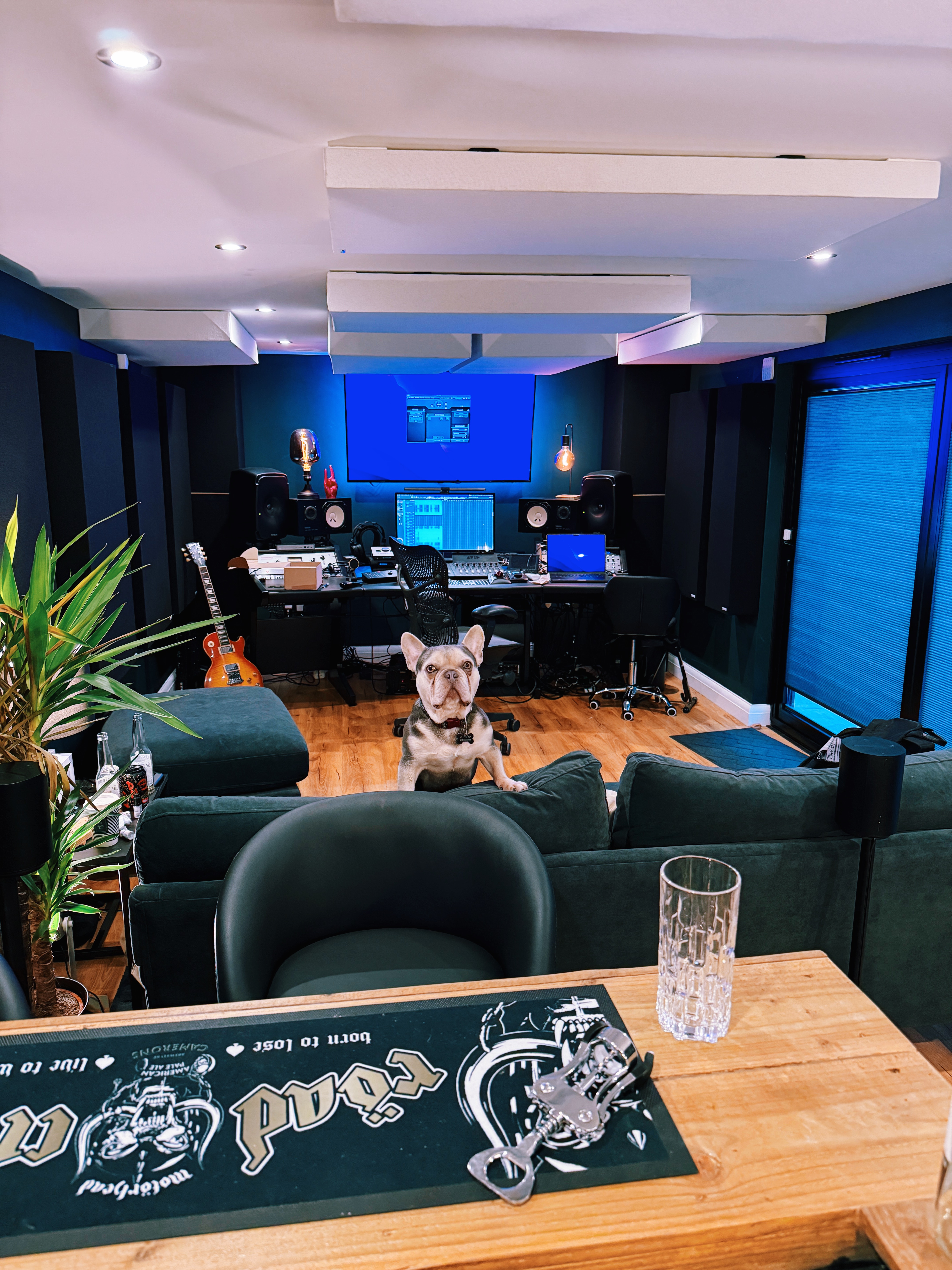
Do you incorporate any room correction in your workflow?
“I use the IK Multimedia ARC Studio system in my tracking room. I've used a lot of room correction over the years, but I've struggled to find something that works with almost zero latency. There are plugins that are great, but especially when you're using an analogue console, it's impossible to use a plugin-based system. I had been begging people for a long time, ‘Can you just make something like this, but in a hardware box?’, and IK did it. It's been amazing.
“I come out of the console into the IK ARC Studio, and then that feeds my monitors. I’ve essentially forgotten about it - and that's what you want! You just have your correction built into your speakers and you never need to think about it ever again. I love the sound of it. But what’s equally important for tracking is the latency. It’s almost zero, and that allows me to have room correction whilst I'm recording instruments, which I wasn't able to before.”
Finally, what advice would you give to producers just starting out?
“I think it's really good to try and understand a range of genres. Once you've got a few years behind you, you can kind of niche down into whatever genre you want. But I always tell people, it's really good to have an understanding of how other genres work, because sometimes - especially now - there’s a lot of fusion of various genres happening, especially in rock. Just look at the work I’ve done with Bring Me The Horizon or Nova Twins, there are so many different electronic elements going along with heavy rock guitars. You need to be able to understand how to mix, say, an 808, but also how to mix big kick drums or snares.
He just said, ‘here you go’, and screenshotted the whole Pro Tools session! Where else do you get that!?
“I actually run an audio community online called Control Room, which is a place where we share a lot of techniques and tips and tricks. It’s an amazing online community. We also meet up at various studios throughout the year. I still pick up things from there that I haven’t thought about! Or, someone might take me back to a technique that I used to do a long time ago and stopped using.
“Just recently, someone was asking about the specific effects that the Manic Street Preachers use, and Dave Eringa, who's been their lifelong producer, chimed in and just told them, ‘Oh, this is how you do it.’ Another time, one of our members said they were trying to get a vocal to sound like a particular Ed Sheeran song, and the first reply was Joe Rubel, who produced the song. He just said, ‘here you go’, and screenshotted the whole Pro Tools session! Where else do you get that!?”
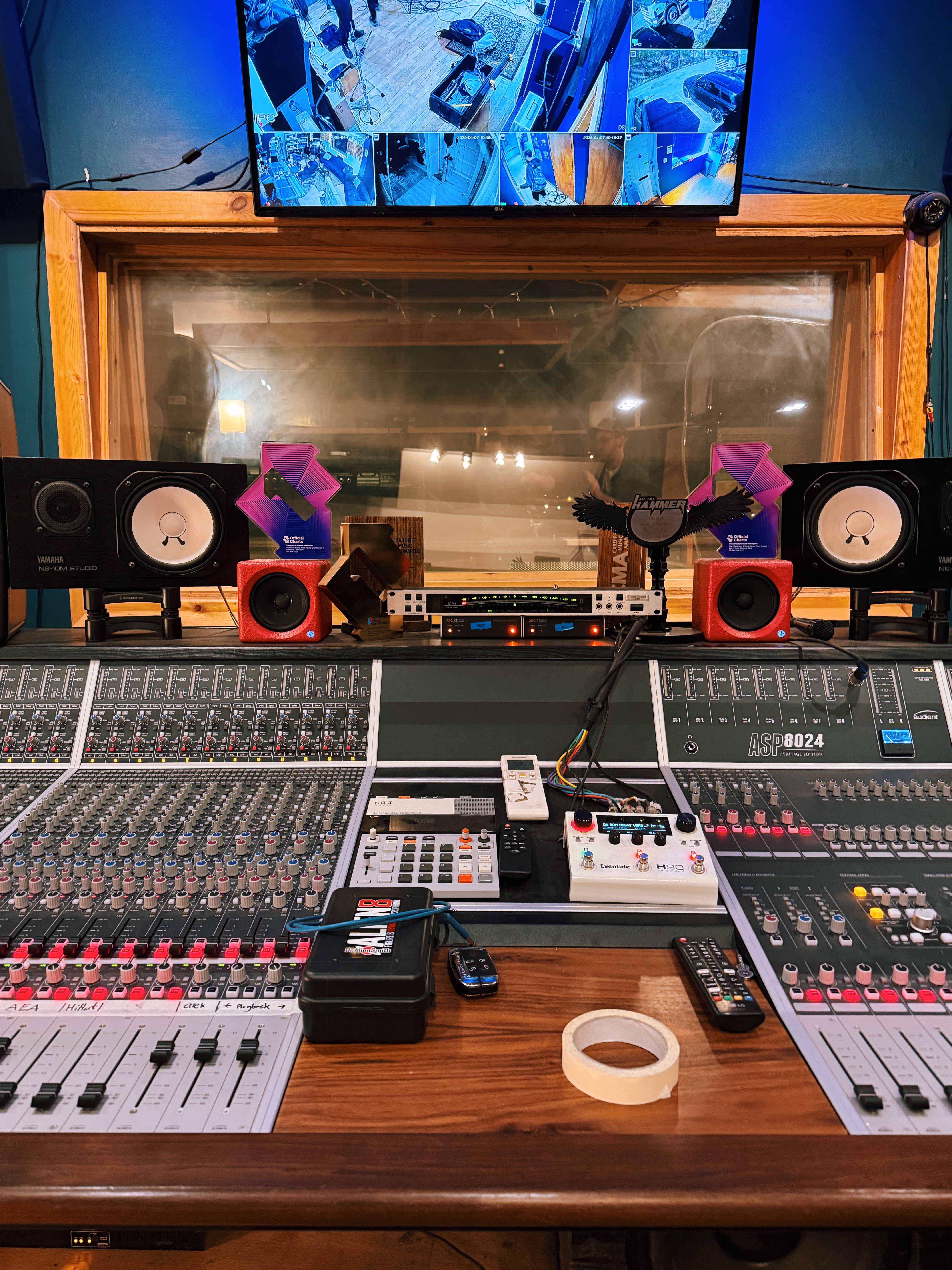
Vincent Joseph is a writer and musician. He has written on music and music technology for MusicRadar, The Guardian, Financial Times, MOJO and more.
You must confirm your public display name before commenting
Please logout and then login again, you will then be prompted to enter your display name.